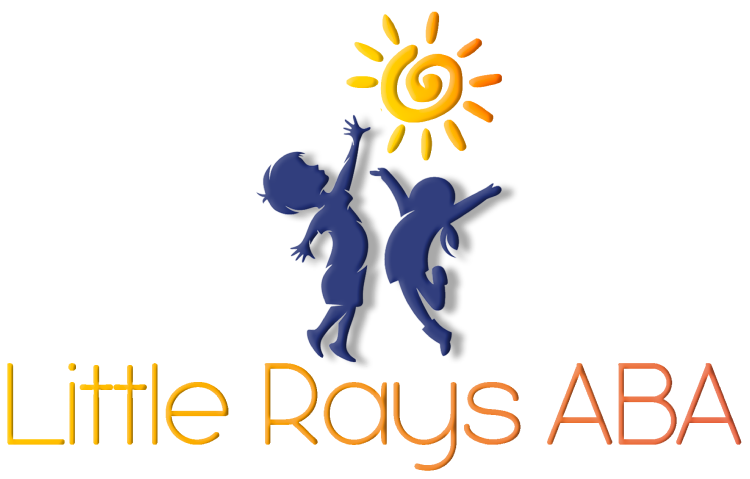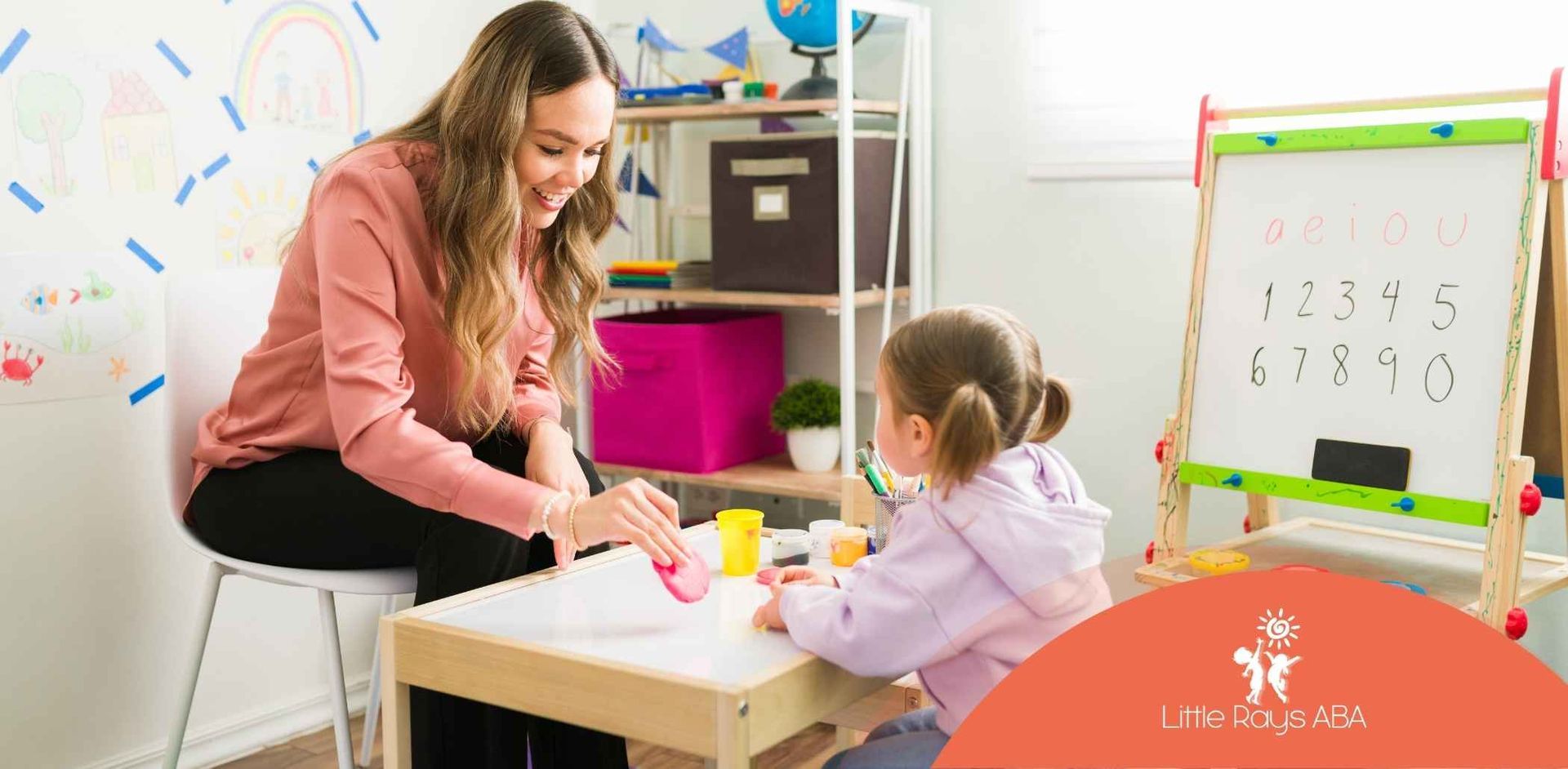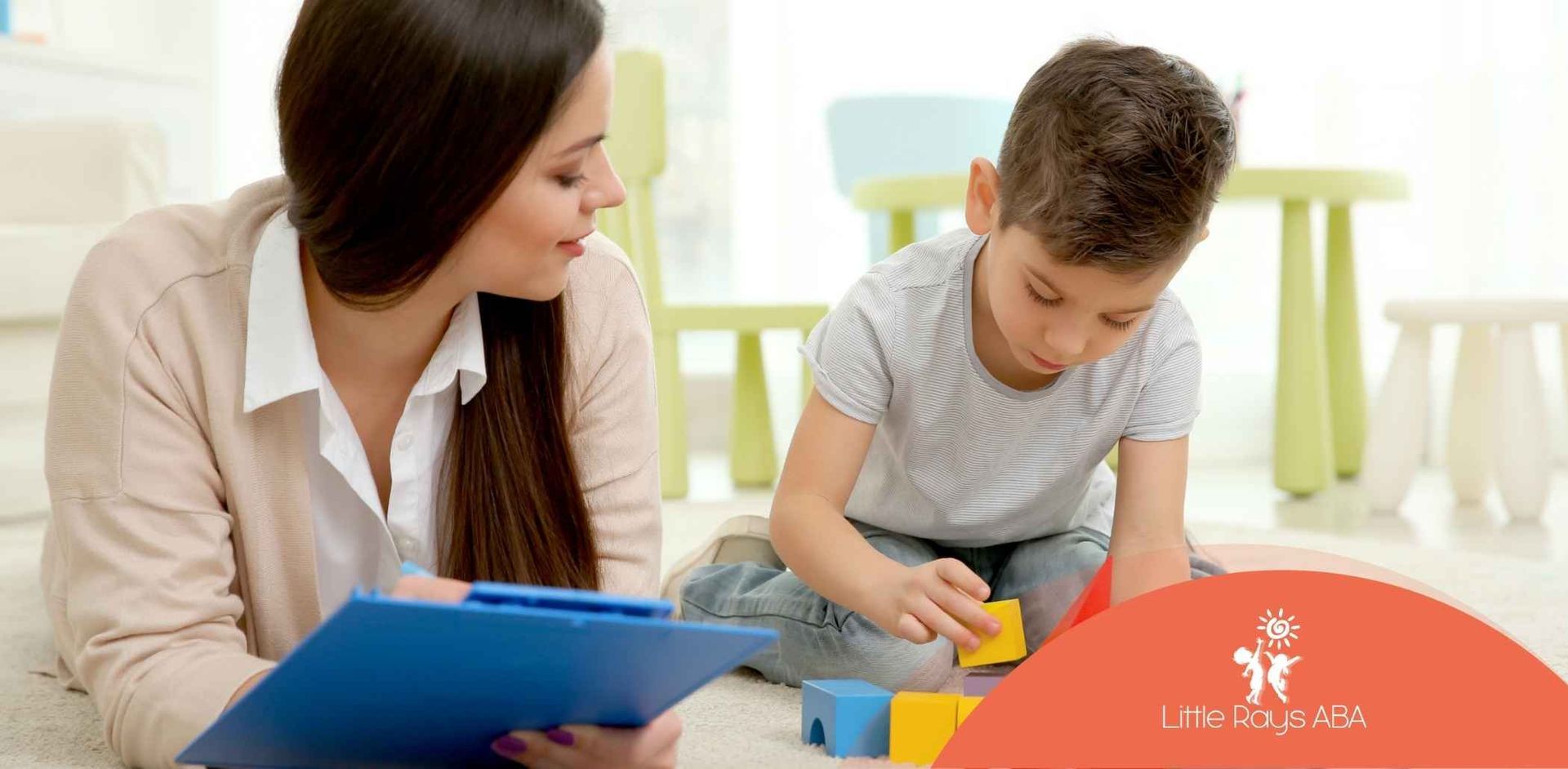
Essential Tips for Effective Parent Training in ABA
Key Highlights
- ABA parent training equips parents with critical skills to enhance their child’s progress, reduce stress, and improve family interactions.
- Behavior Skills Training (BST) is an effective method used to teach ABA techniques in manageable steps.
- Consistent parental involvement strengthens collaboration with ABA professionals and improves therapy outcomes.
- Practical strategies such as role-playing and routine-based interventions make generalization of skills easier at home.
- Addressing time constraints and parent stress are crucial for successful training implementation.
- Monitoring progress through measurable goals and regular feedback sessions ensures consistent improvement in ABA techniques.
Introduction
Applied Behavior Analysis (ABA) parent training is very important in ABA therapy. It helps parents learn effective ways to support their child's growth. When parents are active participants, ABA programs work together with them. This teamwork helps children use their skills in different environments. The main aim of parent training is to give caregivers ABA strategies. These include positive reinforcement and behavior changes that can fit into everyday life. This helps with the overall therapeutic process.
Understanding the Basics of ABA Parent Training
ABA parent training is important for families facing challenges and supporting their child's growth. It is not just about sharing information; it emphasizes learning ABA principles like reinforcement, prompting, and shaping through practical experience. This way, parents can use the right methods at home, which helps create consistent, positive behavior changes. Parent training also focuses on improving communication and managing behavior to make a supportive environment for the child.
To reach these goals, parents get organized training with ABA professionals. They learn methods that suit their child's specific needs. The teamwork in ABA parent training connects therapy sessions to daily life. This helps skills transfer to different settings. By concentrating on both skill acquisition and changing behaviors, ABA parent training promotes a complete approach to achieving positive developmental results.
What is ABA Parent Training?
At its core, ABA parent training teaches parents how to use ABA strategies to help their child's progress. This training covers understanding what leads to behavior and what follows it. It also shows parents how to use techniques like positive reinforcement and shaping. Unlike regular education, parent training focuses on strategies for challenges like autism spectrum disorder found in ABA services.
ABA parent training is given by certified ABA professionals, like Board Certified Behavior Analysts (BCBAs®) or trained staff. They guide parents through organized learning. The sessions are often tailored to fit each family's needs. Parents may participate in teaching, modeling, role-playing, and getting helpful feedback.
These training sessions help parents understand complex ABA ideas in simple ways. They give families the tools they need to build a supportive and consistent home environment. This approach connects therapy settings with home life, helping skills develop well in different situations.
Key Objectives of ABA Parent Training
ABA parent training has clear goals to help families make real progress. One main goal is to teach parents ABA principles, like reinforcement and generalization. This helps them use therapeutic techniques on their own. When parents apply these skills at home, it keeps the learning consistent with what is taught in ABA programs.
Another focus of ABA parent training is behavior management. It provides parents with helpful strategies on how to deal with tricky behaviors and encourage positive ones. By handling behavior in organized ways, parents can lead to better results for their child in different environments.
Finally, good parent training improves family interactions. It builds positive relationships by emphasizing the importance of understanding the child’s needs and encouraging good behaviors. This strengthens the connection between the caregiver and child, leading to better development and a stronger family.
Core Strategies for Effective ABA Parent Training
Effective ABA parent training focuses on
strategies like Behavior Skills Training (BST) and ongoing parent involvement. BST helps parents learn ABA techniques in a clear and simple way. It includes showing what to do, practicing, and getting feedback. This method gives parents the confidence to use ABA principles in their everyday lives.
Equally important is the regular involvement of parents in therapy. When parents actively take part in training and work with ABA professionals, they boost the effectiveness of ABA techniques. This leads to more progress and helps skills transfer to different situations.
Utilizing Behavior Skills Training (BST)
Behavior skills training (BST) is very important for teaching parents in ABA. This approach includes clear instruction, showing examples, and practice. It helps caregivers learn the skills they need to encourage positive behavior change in children with autism spectrum disorder. By joining sessions led by ABA professionals, parents can learn to use strategies in different environments. This helps them to apply what they learn more broadly. BST also encourages teamwork among families. This can lower parent stress and help them use ABA techniques consistently in their daily routines.
Importance of Consistent Parental Involvement
The steady involvement of parents in ABA programs is very important for long-term success. When parents take part actively, they help apply the strategies learned during training in real-life situations. This makes it easier for children to use the skills they learn. Parents who engage regularly make the therapy work better for their child.
Also, when parents stay involved, it helps build a collaborative approach with ABA therapists. This teamwork improves understanding. It also helps in making changes to the therapy when needed. Together, they set clear therapy goals. This enhances both the consistency of treatment and progress.
Being active participants allows parents to create positive family interactions. Their involvement lowers stress and helps children have a stable and supportive place to grow. We cannot ignore how important parents are in making ABA therapy strategies effective and wide-reaching.
Practical Implementation of ABA Techniques at Home
Practicing ABA techniques at home is important for helping kids remember learned behaviors and skills. Parents can use two helpful methods: role-playing different situations and creating daily routine interventions.
By using these strategies regularly, children can apply what they learn in different settings. When parents and ABA professionals work together, they make these efforts successful. This teamwork allows caregivers to adjust the interventions based on how their child is doing at home.
Role-Playing Scenarios with Parents
Role-playing scenarios are a fun and helpful way for parents to learn and practice ABA strategies. This method has parents acting out real-life situations to understand how to use what they have learned, like dealing with challenging behaviors or giving positive reinforcement.
In sessions, ABA professionals may first show behaviors, then parents practice them. For example, caregivers can role-play giving positive reinforcement after their child finishes a task, getting immediate feedback to improve their skills. This kind of hands-on learning helps to strengthen their abilities.
These role-playing scenarios help parents use ABA techniques smoothly in different environments and everyday life. By changing theory into real actions, role-playing connects therapy sessions to real-life use, making parent education more effective.
Developing Routine-Based Interventions
Routine-based interventions use daily routines to apply ABA principles. Parents learn how to add ABA techniques, like reinforcement and prompting, into common activities such as cooking meals or getting ready for bed.
By using ABA methods in structured routines, parents help their children have predictability. This helps children gain skills and change their behavior positively. For example, by reinforcing communication skills during meals, children can practice what they have learned regularly.
These interventions make it easier to add therapy strategies into everyday life. This way, ABA techniques are useful and lasting for families. They provide a steady guide to help positive development in different settings.
Challenges and Solutions in ABA Parent Training
ABA parent training can have issues like parents being resistant or not being consistent. To overcome these challenges, we need specific strategies. This includes clearing up misunderstandings and making personalized training plans for parents.
To deal with resistance, it's important to communicate openly and provide relatable examples. This helps in building trust with parents. Also, supporting families in keeping up with routine-based work helps everyone follow ABA principles more consistently. This gives parents the confidence to use these strategies well.
Overcoming Resistance from Parents
Resistance from parents can make ABA parent training less effective. Common issues are misunderstandings about ABA strategies or doubts about how well they work. To help with these concerns, it’s important to explain things clearly and use simple words.
Linking interventions to what families value can lower resistance. For example, explaining ABA strategies as ways to promote positive behaviors can help parents feel more trusting and eager to join in. Sharing real-life success stories shows how well ABA techniques can work.
Building good relationships with parents is key. It’s important to understand their challenges and hopes. This approach helps them accept and take part in behavior change strategies actively.
Handling Difficulties in Consistency and Application
Consistency and application challenges can happen when schedules don't match or when there aren't smaller goals to work toward. To support parents, it’s helpful to provide them with tools like visual aids and checklists. These can help improve their ability to stick with the plan over time.
ABA professionals should focus on making strategies that fit into family routines. This approach makes it easier for parents to apply ABA techniques. For instance, using ABA techniques during breakfast can help ensure consistency without feeling like extra work.
Checking in regularly and reevaluating can help fix problems in how strategies are used. By working together, parents can feel more confident and carry out ABA strategies successfully in different environments.
Monitoring and Evaluating Progress
Tracking progress is very important in ABA parent training. It helps show if the strategies are working. By setting clear, measurable goals and checking on progress regularly, parents can watch their child’s growth easily.
Feedback sessions with ABA therapists make this process even better. They help talk about any challenges and celebrate the successes. Working together regularly makes sure parents feel supported. It also gives them ideas on how to improve interventions. This way, parents can keep making progress.
Setting Measurable Goals and Objectives
Clearly defined and measurable goals are key to checking how well ABA parent training works. These goals, like improving communication or lowering challenging behaviors, help parents and therapists concentrate on specific outcomes.
Data collection systems, such as graphs or checklists, provide clear feedback on progress. For instance, parents can see how well reinforcement works by noting the good behaviors shown by their child.
Well-organized goals create a helpful plan, keeping parents motivated. This also supports important changes in their child’s growth path.
Regular Feedback Sessions with ABA Therapists
Regular feedback sessions are key to measuring how well parent training is going. ABA professionals help parents with their challenges and point out areas that may need change during these sessions.
By sharing helpful data, parents can see their progress, like how often behavior improves. Therapists can also give practical tips based on what parents track. This helps make sure the help they get is effective.
These feedback sessions build teamwork, so parents can confidently improve their skills. They also create a supportive setting that encourages children to use their skills successfully at home.
Conclusion
In conclusion, good parent training in ABA is very important for helping kids change their behavior for the better. When parents learn the basics of ABA and use key strategies like Behavior Skills Training, they can build a strong support system that helps kids grow. It’s vital to look for problems early on and check progress with clear goals and feedback from therapists. Focusing on the teamwork between parents and professionals makes the help more effective. It also lets families be active participants in their child’s development. Start your journey today to make a real difference in your child's life!
Frequently Asked Questions
How often should parents be involved in ABA sessions?
Parents need to get involved in all parts of ABA therapy. When parents take part regularly—like watching, attending training sessions, or using strategies at home—it helps make sure the skills stick and outcomes get better. Working together with ABA professionals is essential for ongoing progress.
What are common mistakes in ABA parent training?
Common mistakes can happen when people focus too much on reducing behavior and forget about teaching new skills. They may also use reinforcement in an inconsistent way and misunderstand ABA principles. Good parent education and customized strategies help parents avoid these issues. This way, they can better support their child’s growth during ABA training sessions.
SOURCES:
https://masteraba.com/aba-parent-training-the-complete-guide-to-helping-parents-succeed/
https://pmc.ncbi.nlm.nih.gov/articles/PMC9122419/
https://www.abaparenttraining.com/home/2022/2/15/7-strategies-for-providing-high-quality-aba-parent-training
https://www.abaparenttraining.com/home/2024/8/4/can-parents-do-aba-at-home
https://www.abaparenttraining.com/home/2020/12/28/common-problems-you-might-have-as-a-parent-trainer
https://howtoaba.com/training-parents/
Related Posts





